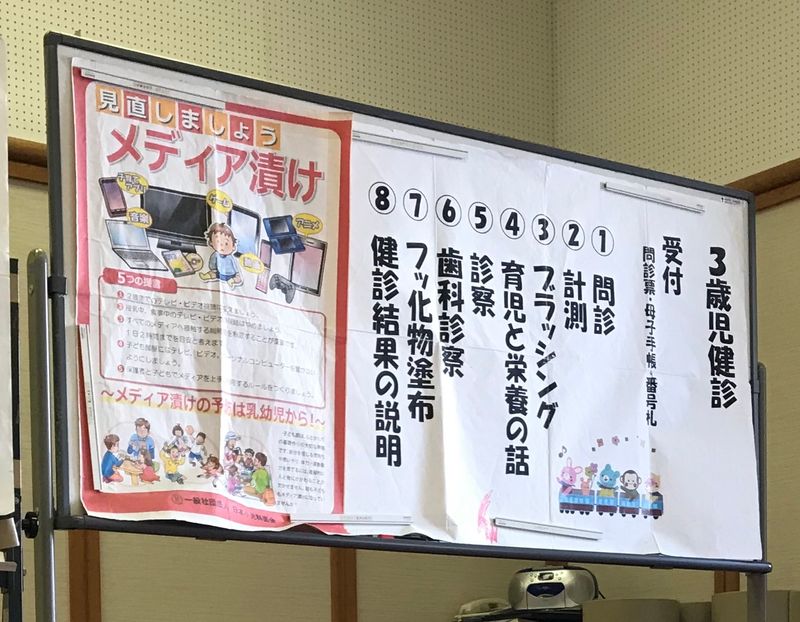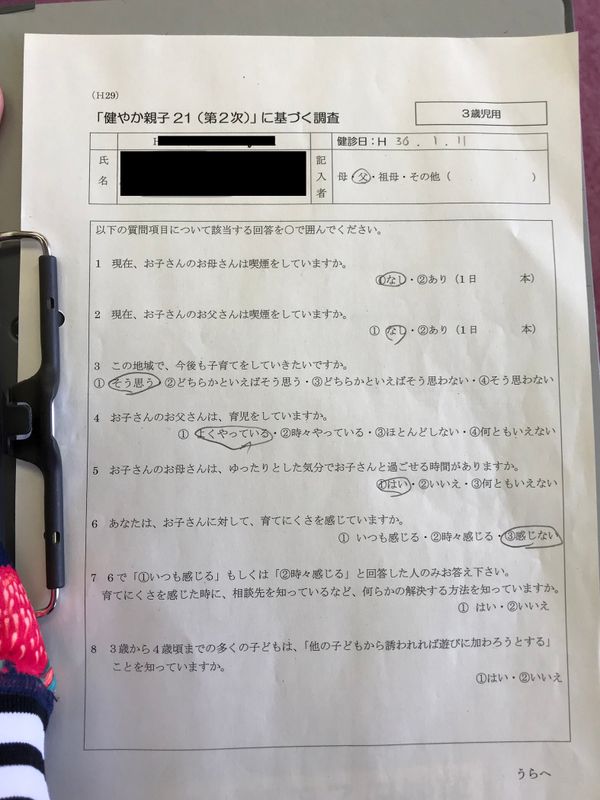Jan 28, 2018
What to expect from your children's periodic health check-ups in Japan
Have you ever taken your your young child to one of the group checkups here in Japan? I’m referring to the periodic appointments that occur for children between birth and about four years, where the city office brings medical/dental personnel to a central venue and knock out the appointment for all children of the same age born in a particular birth month.
Perhaps this is something common only to the rural areas of Japan, but I had my first taste of it when I took my daughter for her 3-year appointment. Let me tell you, I had no idea it would be like that. 2 hours and multiple tests later, I've learned a few things for next time. Allow me to describe what happened here so you have an idea of what to expect if you ever have to take your child to one of these appointments.

Step 1: The Questionnaire
We received the questionnaire in the mail from the city office well before the scheduled appointment date. In order to be seen at the group appointment, you need to fill out the paperwork beforehand. There’s no need to do any additional coordination, but make sure to bring your Boshi-teccho (mother-child record book)
Step 2: Check- in
When the day came , I brought my daughter to the event, in part because I lik spending time with her and in part Because there wouldn’t be English language support and I’m the Japanese speaker in the house. At the venue, there was a receptionist to check us in. Conveniently, the city office already had our name on the list. From there, I had to fill out and additional questionnaire that seemed to be more suited for gauging my own health as a parent (“Do you have people who help you share the responsibility of raising the child?”) as well as suitability, (“How often do you leave your child home unattended—never, sometimes, often?”).

Step 3: Mass Briefing
This was pretty straightforward: one of the health professionals stood up and delivered a briefing on what to expect for the day, chastised parents who let their kids have too much TV/tablet/videogame time, and told us baseline expectations for feeding and communication with 3-year olds.
Step 4: Aptitude test & Lifestyle questions
When the time came, my daughter and I were called to a table where she was asked to answer a few questions (“what’s your name?” “What are your friends names?”) and to tackle a few tasks (stack blocks, draw a circle and other shapes, and point out colors and objects in a picture book). The official then asked me a few questions ("What time does she go to sleep every night?" "Do you eat meals together as a family").
Step 5: Height and Weight measurement
(Nothing out of the ordinary here)
Step 6: Teeth Brushing instruction
Although we started early brushing our daughter’s teeth, I suppose the Japanese government wants to make sure that everyone is on board the teeth brushing train by three years old. You have an option to pay 300 yen extra for flouride application, but we use fluoride toothpaste at home so we opted out of that.
Step 7: Doctor’s Examination
This is just a quick exam with a doc who does a vitals check and look over unless your child has any existing medical conditions, in which case the doc will conduct follow-on tests.
Step 8: Dentist’s Examination
The dentist will check for cavities and do a once over to make sure the teeth and gums look good.
Step 9: Review of paperwork
At the end, one of the officials will review your boshi-teccho and answer any final questions you may have.
When all was said and done, about 2 hours had passed, so be ready for a somewhat lengthy appointment. Also, my own did not have English language support, so you may want to think about bringing a friend or spouse who can speak Japanese if you need to take your kid to one of these appointments.
Well, there you have it. As with most new experiences, there were good and bad aspects, but at least I'm prepared for next time--hopefully this little blog post will help you be prepared, too!
If you have any questions or additional feedback for readers from your own experiences, feel free to use the comments section below!
Hitting the books once again as a Ph.D. student in Niigata Prefecture. Although I've lived in Japan many years, life as a student in this country is a first.
Blessed Dad. Lucky Husband. Happy Gaijin (most of the time).



1 Comment
edthethe
on Feb 1
I love that they check in with the parents. It was soooo troublesome the first few times I had to go because I had to walk all the 40 mins to get to my first appointment when I didn't have a bike. I also missed each appointment by a month because I was sick each time. But, it is good to know the city is doing something to look into the mental health of the parents, and the overall health of the new babies.